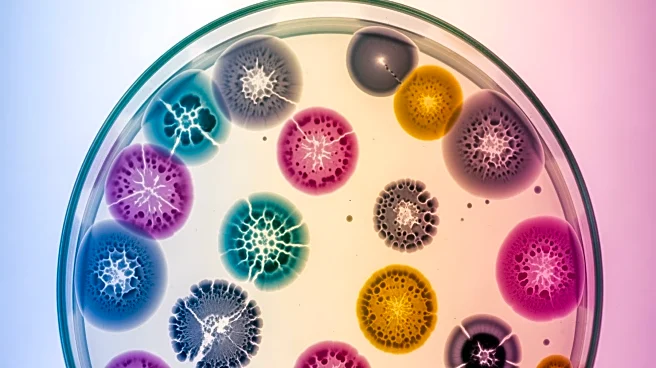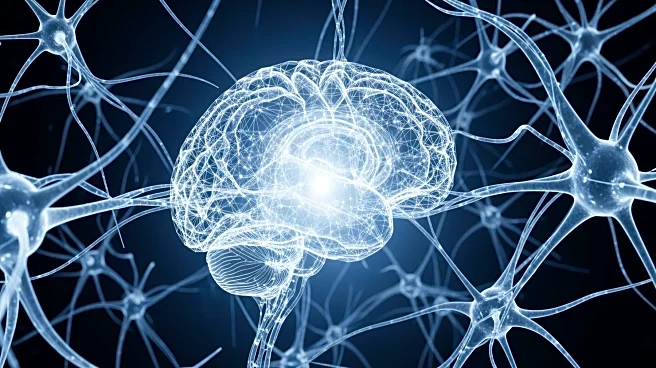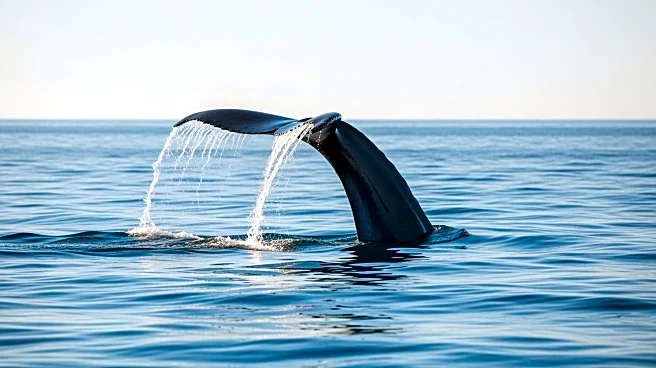What's Happening?
A recent study has explored the conditions under which microbial strains can invade and displace existing strains within established communities. The research, grounded in ecological theory, utilized mathematical
models to predict strain invasion and displacement, focusing on nutrient and interference competition. The study involved engineered E. coli strains to test predictions, revealing that strain displacement is influenced by the availability of private nutrients and the production of antimicrobial toxins. The findings suggest that strain displacement requires a combination of high interference competition and low resource competition.
Why It's Important?
Understanding strain displacement in microbiomes is crucial for developing strategies to manage microbial communities, particularly in human health contexts. The study's insights could inform approaches to suppress antibiotic-resistant strains by leveraging natural competition mechanisms, such as bacteriocin production. This has implications for treating infections and maintaining healthy microbiomes, potentially reducing reliance on antibiotics and mitigating antimicrobial resistance. The research highlights the importance of ecological competition in shaping microbial community dynamics, which could influence future microbiome-based therapies.
What's Next?
Further research may focus on applying these findings to diverse microbial communities beyond E. coli, exploring the potential for strain displacement in natural settings. Investigations into the role of nutrient blocking and community diversity in strain invasion could lead to new methods for controlling harmful microbial populations. Additionally, the study's approach could be adapted to other microorganisms, broadening its applicability in ecological and medical research.
Beyond the Headlines
The study raises ethical considerations regarding the manipulation of microbial communities, particularly in human health applications. The potential to displace antibiotic-resistant strains using natural competition mechanisms could shift the paradigm in infection control, emphasizing ecological balance over chemical intervention. Long-term, this research may contribute to sustainable practices in microbiome management, fostering healthier ecosystems and reducing environmental impacts of antibiotic use.











